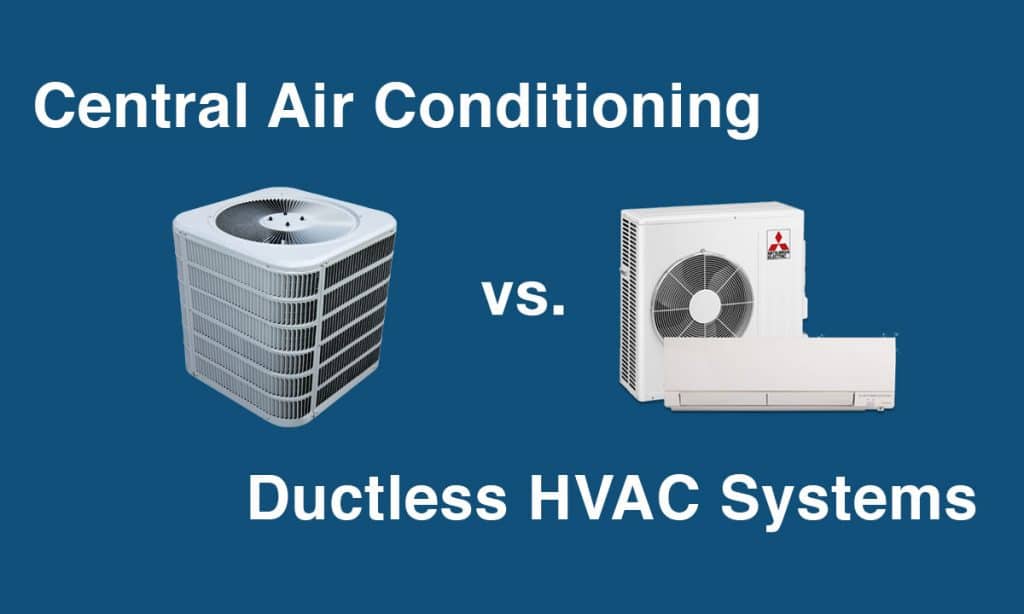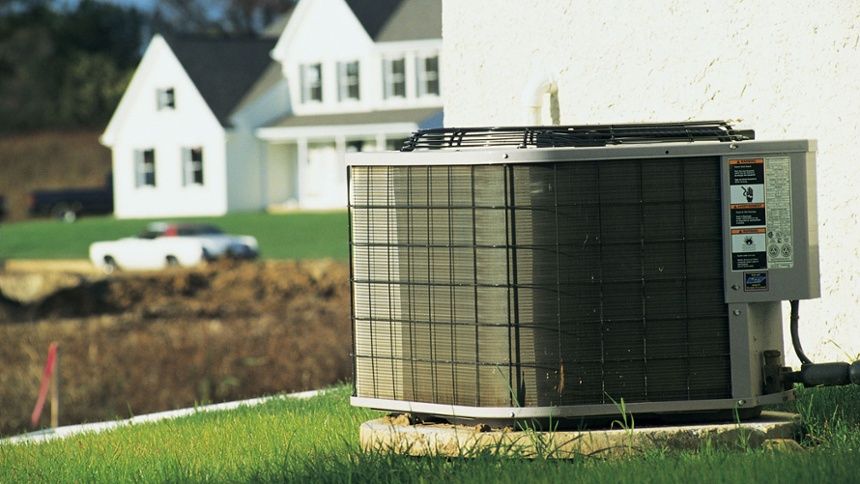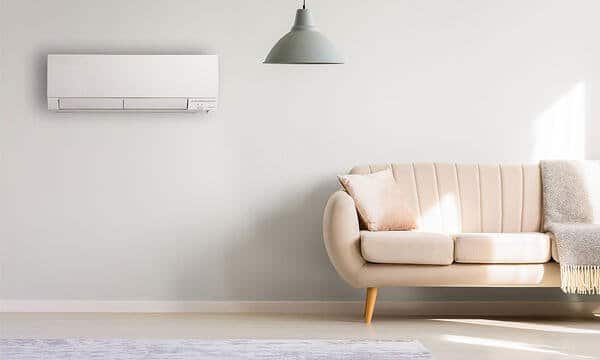
For years, central HVAC systems were the default option, but recently, the popularity of ductless systems has surged. Ductless systems are popular in homes that don’t have ductwork, but due to the efficiency of these systems, people are also choosing to replace their ducted systems with ductless options. Here’s what you should know about the differences between the two.
What Is Central Air Conditioning?
There are two types of central air conditioners: split systems and packaged units. With a split-system central air conditioner, the indoor unit holds the evaporator, while the outdoor unit houses the compressor and condenser. Generally, the indoor unit includes a furnace, and fans blow hot or warm air through the building using a series of ducts.
In a packaged central air conditioner, the condenser, evaporator, and compressor are all located in one cabinet, which is installed outside the home or building. These units may include a natural gas furnace, which eliminates the need for a separate indoor furnace. Again, ducts run from the cabinet to vents that are spread throughout the building, and fans blow hot or cold air through the ducts.

What is a Ductless System?

Ductless systems also feature indoor and outdoor components and include a heat pump so they can handle both heating and cooling. One outdoor unit can work with multiple indoor units which is perfect for most situations, but to cool a large multi-story commercial building, you may need more than one outdoor unit.
Unlike central HVAC units, ductless systems don’t have ducts. They move refrigerant between the indoor and outdoor units using small tubing that runs through the walls or ceiling cavities, and cool air blows out of the indoor units, rather than out of vents connected to ducts.
Ductless System vs Central Air Conditioning: Pros and Cons
Here are the most important factors to consider when evaluating the benefits of a ductless system over central air conditioning.
Design Flexibility

With ductless systems, the outdoor unit is small and can be placed in a range of positions such as on the roof, on a ledge, or next to the building. Indoor units come in multiple designs to work with your decor, and you have a lot of flexibility on where to place the units. In contrast, with central HVAC systems, you have limited options on where the vents can go.
Energy Savings

With a ductless system, if you decide that you don’t need to use a room on a certain day, you can turn off the cooled air. This provides significant energy savings. Beyond that, ductless systems operate more efficiently than their central cooling counterparts. As air travels through ductwork, it tends to seep into unconditioned areas of the building.
For example, if your ducts run through a hot attic, some of the cold air leaks into that space, driving up your overall cooling costs. Due to these issues, a central air conditioning system can result in energy losses of nearly 30%. With a ductless system, there is no ductwork involved, so the problems of leaks and wasted cool air are eliminated completely.
Easy Installation

The absence of ductwork makes ductless systems relatively fast and easy to install. There is no need to tear down walls or do major renovations, and most contractors can handle small installations in a day or so. For large installations with multiple indoor and outdoor units, you can even opt to do the installation in zones so that you don’t have to shut down all of your operations.
Cost

If you don’t have existing ductwork, the cost of ductless is considerably less expensive than putting in a central HVAC system. In cases, where the ductwork is already in place, however, ductless systems may be slightly more expensive than just buying a new central air conditioner.
However, installation is only the first cost to consider. You should also consider energy efficiency, and in most cases, ductless systems are cheaper to run long-term. Beyond that, you never have to worry about cleaning the ducts when you have a ductless system, and that adds to the overall savings.
